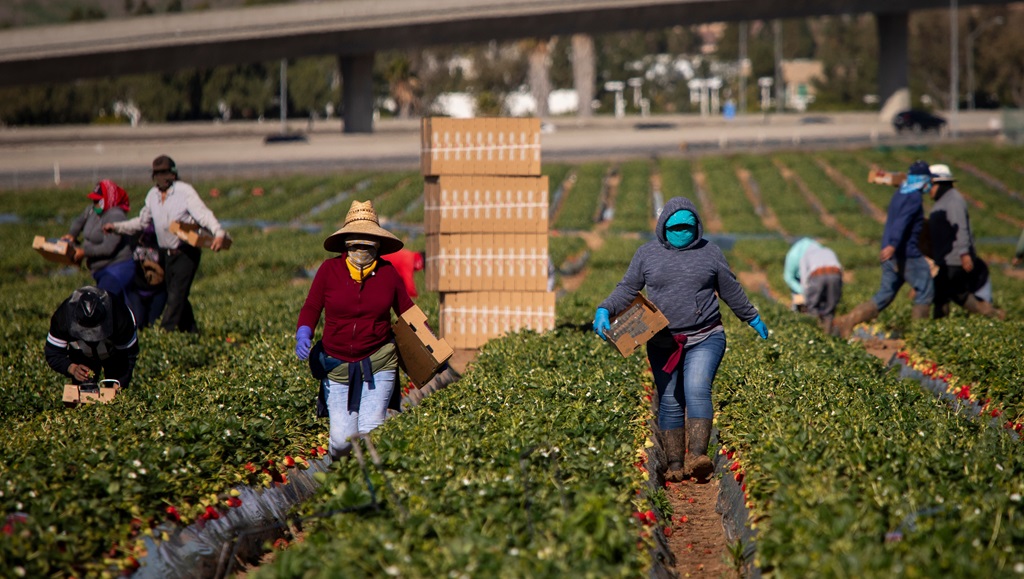In April, the Department of Labor (DOL) published an expansive regulation aimed at increasing protections for the growing number of temporary agricultural workers entering the United States on H-2A nonimmigrant visas. A key component of the regulation establishes new protections for H-2A workers to engage in collective action to advocate for themselves or others regarding working conditions.
Since its publication, four lawsuits have been filed against the DOL by 22 states, several farm owners, and trade associations seeking to block these protections from being enforced.
The regulation specifically requires employers to certify that they will not intimidate, threaten, or otherwise discriminate or retaliate against agriculture workers for:
- Engaging or refusing to engage in activities related to self-organization, including any effort to form, join, or assist a labor organization.
- Engaging or refusing to engage in other concerted activities for the purpose of mutual aid or protection relating to wages or working conditions.
- Refusing to attend an employer-sponsored meeting with the employer where the primary purpose is to communicate the employer’s opinion concerning this protected activity.
As justification for the regulation, DOL has emphasized that H-2A workers are particularly vulnerable to exploitation. In fiscal year 2022, its Wage and Hour Division (WHD) conducted 420 investigations of employers using the H-2A program, which resulted in nearly $10 million assessed in back wages and civil monetary penalties. However, the Economic Policy Institute recently found that since 2000, WHD investigations have plummeted by over 60 percent culminating in a record low number in 2022.
Monitoring compliance is challenging for the DOL as the use of the H-2A program by U.S. agricultural employers has exploded in the past few years. Between 2017 and 2022, the number of H-2A jobs approved or certified by the DOL grew from 224,965 to 370,628, a sevenfold increase from the early 2000s when certified jobs ranged between 40,000 and 50,000. Despite this growth, the total number of agricultural jobs has remained stable since the 1990s, meaning U.S.-based farmworkers now make up a smaller share of the labor force.
One key role played by the DOL in the H-2A program is to ensure that the employment of nonimmigrant agricultural workers will not adversely affect U.S.-based ones. The DOL has stated that the new regulation is needed partly because of the increased presence of H-2A workers, who are particularly vulnerable due to the temporary nature of their employment, their geographic isolation, and dependency on a single employer. The DOL noted that without collective action protections for H-2A workers to enforce the terms of their visas without the fear of retaliation, the rights of U.S.-based workers at those same worksites could be negatively impacted.
However, these provisions have sparked several lawsuits. Kansas and sixteen other states filed the first lawsuit w alongside a Georgia-based farm and trade association, in June. In, Kansas v. U.S. Department of Labor, the states argued that DOL did not have the authority under immigration law to impose these new requirements on employers. Similarly, the plaintiffs also argued that the DOL could not create new rights for agricultural workers, even if the farmworkers were part of the H-2A program. Since the 1930s enactment of the National Labor Relations Act (NLRA), the principal federal law governing collective action at the workplace, agricultural workers have been explicitly cut out of those protections.
While the district court found the DOL had the regulatory authority to impose the new collective action protections through its role in “balanc[ing] the competing goals” of providing an adequate labor supply while protecting the jobs of domestic workers, ultimately it found that the rule conflicted with the NLRA and was therefore unconstitutional. The judge issued a preliminary injunction but refused to expand the effect of the ruling nationwide. Instead, it was limited to the plaintiffs in the case: the seventeen states and the two private entities.
Initially, the DOL announced a temporary pause to the implementation of the rule, but on September 10 decided to implement a bifurcated system—applying the new rule to states not covered by the injunction and pausing its implementation on those covered by the Kansas case. This caused several industry groups, including the National Council of Agricultural Employers (NCAE) and the U.S. Chamber of Commerce, to file their own lawsuits. Alabama, Kentucky, Ohio, and West Virginia intervened to join as plaintiffs in NCAE’s case while Mississippi is a named plaintiff in the U.S. Chamber’s. In total, there are four lawsuits, including another led by the North Carolina Farm Bureau, pending against the DOL’s new rule.
Each lawsuit questions the DOL’s authority to impose the new collective action protections. Given the current bifurcated H-2A application process, some plaintiffs are calling on the district courts to issue a national order to halt the DOL rule citing “practical challenges” for multi-state businesses, which are required to submit separate applications if they have a worksite in one of the 17 states covered by the Kansas injunction and another in one of the other 33 states.
Soon, we may learn whether the DOL’s divided H-2A application system will remain in place or if the rule will be halted nationwide, as the NCAE’s request for a preliminary injunction is scheduled for a hearing in November. Despite these legal battles, the H-2A program remains vital due to chronic labor shortages in agriculture. Participation continues to grow, even though the program is often considered cumbersome and costly by farmers and high-profile cases of labor abuses have emerged from the program.
FILED UNDER: Department of Labor


